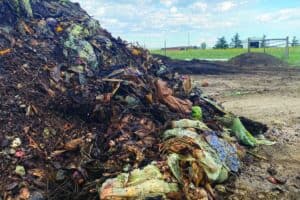At their May 14 meeting, the El Paso County Board of County Commissioners approved a resolution to form a stakeholder group to study groundwater contamination in the county.”As a board, we’ve said we have some red flags here when it comes to water quality,” said Commissioner Amy Lathen. “Because of that, we’re going to study it.”The board gave Mark Gebhart, the county’s land development code administrator, 45 days to invite potential stakeholders to participate in the study group.Cherokee Metropolitan District and Meridian Service District are potential stakeholders that have offered to help the county fund the study, Lathen said.Other stakeholders could include the Upper Black Squirrel Ground Water Management District and the Black Forest Land Use Committee.Judy von Ahlefeldt, who is a member of the Black Forest committee, said golf course operators, the Natural Resources Conservation Service and the County Conservation District should also be invited to join the study.Von Ahlefeldt said the approved resolution is much better than an earlier proposal that would have restricted the study to testing only for nitrates from septic systems.Black Forest hydrogeologist Julia Murphy, who has applied to be a stakeholder, said there is anecdotal evidence of different types of contaminates in El Paso County groundwater, but, she said, “There’s mixed opinion on whether contamination is getting into Denver Basin wells.”There has been shown to be a hydrologic connection with the underlying aquifer, whether it’s the Dawson, Denver or Arapahoe. If contamination is found in the upper portion, then it possibly could go down into the deeper segments, and therefore should be sampled.”Of the 26,000 well users drinking water from the tap, Murphy said, “I would say a good 99 percent have never tested for anything other than coliform, so I think this study is important.”I’ve done water samples for many homeowners out here and the water has come out perfectly fine, so I’m not really concerned about finding high hits of contamination. But alluvial basins are so much more exposed to the surface. Contaminants are flushed with every rainfall, and people are drinking water from shallow wells.”The Upper Black Squirrel Creek groundwater commission, concerned about contamination from septic systems, sued the county in 2008 (and lost) over the county’s decision to approve septic systems on 2.5-acre lots in the Sanctuary in the Pines development.The development is located at the headwaters of the Upper Black Squirrel Creek, with the creek going right through the development. The bedrock is so shallow that water goes straight down, running along the bedrock, Murphy said.The county’s concern about groundwater contamination was sparked when, at a work session in April, Gebhart suggested the county consider requiring central water systems for future developments using individual septic systems on lot sizes less than 5 acres.Gebhart’s work session materials show that in 1980 the minimum lot size for parcels having individual septic systems and wells was reduced from 5 acres to 2.5 acres, which is the current minimum size.Since then, nine subdivisions, such as Kings Deer, Cathedral Pines and High Forest Ranch, have been built in Black Forest, with individual wells and individual septic systems on 2.5-acre lots.The Sanctuary in the Pines development has a central water system, which, according to Gebhart’s work session materials, makes 2.5-acre lots with septic systems “more feasible to market.”In Falcon, Latigo Trails and portions of Paint Brush Hills were built with individual wells and septic systems on 2.5-acre lots.Gebhart’s work session materials state that the “UBSGWMD has adopted rules and continues to write letters of objection to county subdivision actions based upon perceived contamination of groundwater. County staff is not aware of any scientific studies showing evidence of groundwater contamination in the county attributable to the allowance of 2.5 acre lots utilizing well and septic systems in El Paso County.””Collecting the data is a good idea,” Murphy said. “If they’re going to make a change in policy, they should have supporting data.”If the study finds contamination, “the place to treat it will be at a wastewater treatment facility,” she said. “So finding contamination will give more credibility for future projects to use central wastewater treatment systems.”






